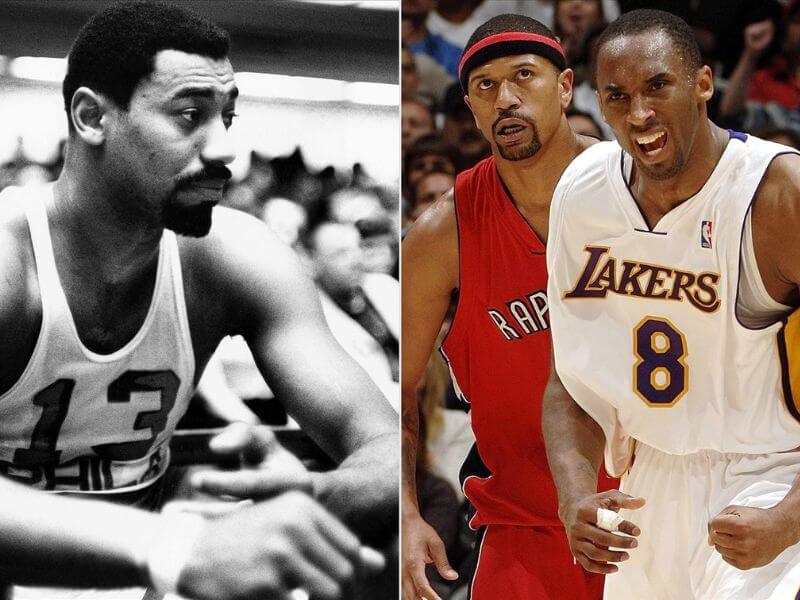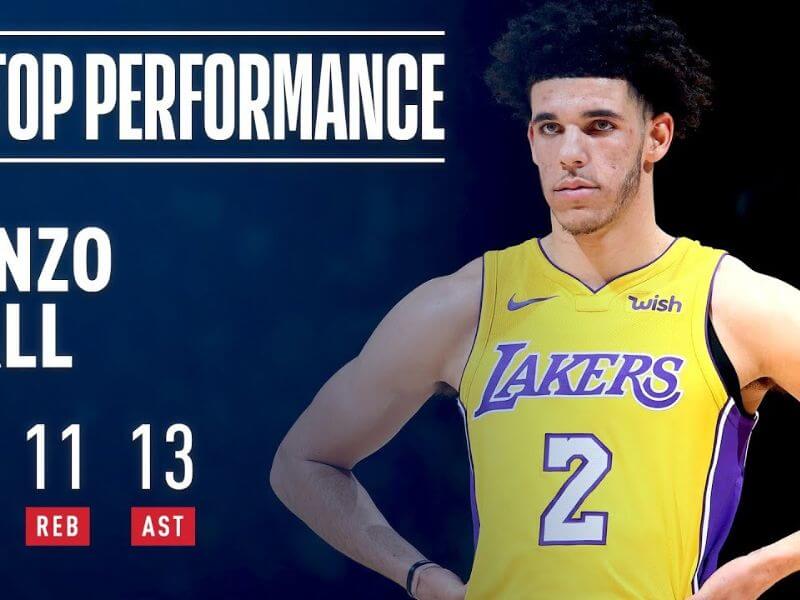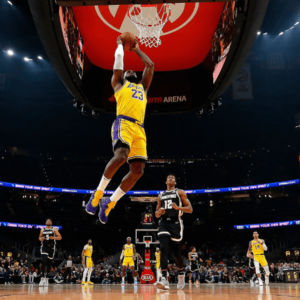What is a carry in basketball? The carry in basketball can be difficult to detect in real time. In a live game, they often happen so fast that players, fans, and officials completely miss it. But what is a carry in basketball? What’s the penalty when a player does commit the violation? And how can a coach help their players avoid carrying during games?
What is a Carry in Basketball?
The rule is called a ‘carry’ because of the action the player does when they commit the violation.
It looks like they’re “carrying” the basketball with their hand instead of dribbling it.
“A player who is dribbling may not put any part of his hand under the ball and (1) carry it from one point to another or (2) bring it to a pause and then continue to dribble again.”
As the rule states, players must dribble with their hand on top of the basketball.
Once their hand gets underneath and then they continue their dribble, that is a carry.
Players also can’t hold the ball and pause, then resume their dribble, as the rule states.
This is not to be confused with a double dribble, which is called when a player is dribbling, picks the ball up completely, then starts their dribble again.
A “carrying violation” is called if it’s just a “pause” in the dribble while it remains in one hand, then a resumption after the pause.

Why is Carrying the Basketball Illegal?
Dribbling is a key fundamental of basketball.
As players progress, they learn different moves while dribbling to try and get by defenders.
However, if carrying was allowed, it would give the offense a significant advantage.
The dribbler could move in unnatural directions. It was just be simply unfair.
Making players keep their hand on top of the ball while dribbling gives the defense a fighting chance to contain the basketball.
If the offense could carry the ball instead of maintaining their dribble, it would be nearly impossible to play good defense!
What’s the Penalty for Carrying?
Just like a double dribble or travel, a carry is a dead-ball turnover.
In high school and college, the ball is thrown in from the sideline or baseline closest to where the violation occurred.
While in the NBA, the ball is inbounded between the free throw line and baseline to try and give the defense more of an advantage.
Should Carrying Get Called More Often?
You’ll often hear critics say violations like traveling and carrying aren’t called enough.
Are some carrying violations missed? Of course.
But NBA players are masters at their crafts. They work hours and hours on their games to be the best in the world at basketball. What people generally think is a carry, usually isn’t.
Players in the NBA often use a “pocket dribble,” where their hand is behind the ball, but not underneath it. Some people call this pocket dribble a hesitation move.
While it may look like a carry to the naked eye, it isn’t one. The ball never goes underneath the player’s hand and the pause isn’t long enough to warrant a violation call.
Referees, especially in the NBA, are specially trained to spot the differences and blow their whistle when a real carry actually occurs.
Teaching Players to Avoid Carrying
The majority of carrying calls happen during youth basketball.
Youth players are still learning and trying to get a grasp on the fundamentals of the game, which includes proper dribbling techniques.
Ways you may see carrying called in a youth basketball game include:
Player is dribbling too high and hand is placed underneath the ball.
Player hesitates with their dribble, and their hand slides under the ball.
Player is sprinting while trying to control their dribble, leading to a carry.
Player is stationary dribbling and accidentally palms the basketball.
If players frequently carry the basketball, it’s incredibly important their coach corrects it.
If players aren’t taught proper dribbling, their poor habits will be extremely hard to break.
Basic definition of carrying
Carrying, sometimes referred to as palming, is an action as well as a violation that occurs when an offensive player in possession of the basketball initially dribbles it with one particular hand, but afterwards, the player gathers the ball so that it can temporarily rest in the palm of that same hand, followed by another dribble.
Carrying violation and subsequent penalty
Once an offensive player in possession of the basketball allows it to rest in the palm of their dribbling hand, especially within organized competition such as a standard 5-on-5 basketball game, that would more than likely result in a carrying violation called by the referee.
Following that, the opposing team would receive possession of the basketball as the penalty for the carrying violation and the offensive player that committed the violation would be credited with a turnover, which is also added to that team’s total amount of turnovers within the official box score.
Moreover, it should also be noted that even within informal games such as pick-up basketball or streetball, offensive players could be challenged by opposing players for carrying.

Carrying could lead to a potential unfair advantage for the offensive player
The general reason why carrying is a violation within the game of basketball is because it could potentially result in the offensive player gaining an unfair advantage over the on-ball defender that would be guarding them.
Essentially, by carrying the ball, an offensive player could create more separation from the on-ball defender than what would be feasible in most cases.
For example, let’s say that a point guard has possession of the ball near the top while being guarded by an on-ball defender. Next, let’s say that the point guard executes a double crossover dribble in an attempt to get around the on-ball defender.
However, during the second part of the double crossover dribble, the point guard carries the ball by holding it in the palm of the hand.
Basically, during the second phase of the crossover dribble action, the point guard would naturally lean in one particular direction before dribbling the ball across their body to the other direction.
Yet, if the point guard is able to carry the ball prior to that second crossover, even for a split second longer than normal while leaning in one direction, then the on-ball defender would most likely slide their feet towards that direction to cut off the point guard’s potential dribble drive.
Afterwards, once the point guard completes the second crossover dribble, this would result in misdirection that is illegal for this case and an unfair advantage by way of more separation than usual when compared to a crossover dribble that did not include carrying.
Additionally, an offensive player could carry the ball in such a way that makes it appear to the on-ball defender that the offensive player is on the verge of completely their dribble.
As a result of that, the on-ball defender might change their defensive stance but when that occurs, the offensive player could illegally dribble again and blow by the on-ball defender.
To give an example of that, let’s say that a shooting guard has the ball and is dribbling downhill towards the basket during transition offense.
At the same time, let’s also say in terms of transition defense, a certain opposing player engages with that shooting guard and becomes an on-ball defender.
Moreover, to prevent an easy scoring opportunity at the basket, the opposing player utilizes a standard defensive stance, which includes having their knees bent, feet slightly more than shoulder width apart, back straight, eyes forward, and arms extended away from their sides.
However, to counter that defensive stance, the shooting guard decides to illegally carry the ball while dribbling it, mainly by allowing the ball to temporarily rest in the palm of the hand.
At that moment, the on-ball defender is convinced that the shooting guard is about to end their dribble.
Therefore, the on-ball defender immediately changes their defensive stance by moving towards the offensive player to either contest a potential jump shot or at least implement more pressure defense.
Unfortunately for the on-ball defender, the shooting guard has successfully deceived them with an illegal ruse and quickly dribbles the ball again.
When that happens, the on-ball defender is not able to swiftly change their momentum to stay in front of the shooting guard and as a result, the offensive player is able to attack the rim and score at the basket.
What are violations loosely related to carrying
Violations that are loosely related to carrying include the double dribble violation and the traveling violation.
Basically, those particular violations are related to carrying because each of them consists of the offensive player executing a type of dribbling error.
Above is information what is a carry in basketball. Hopefully, through the above content, you have a more detailed understanding of what is a carry in basketball .Thank you for reading our post.


